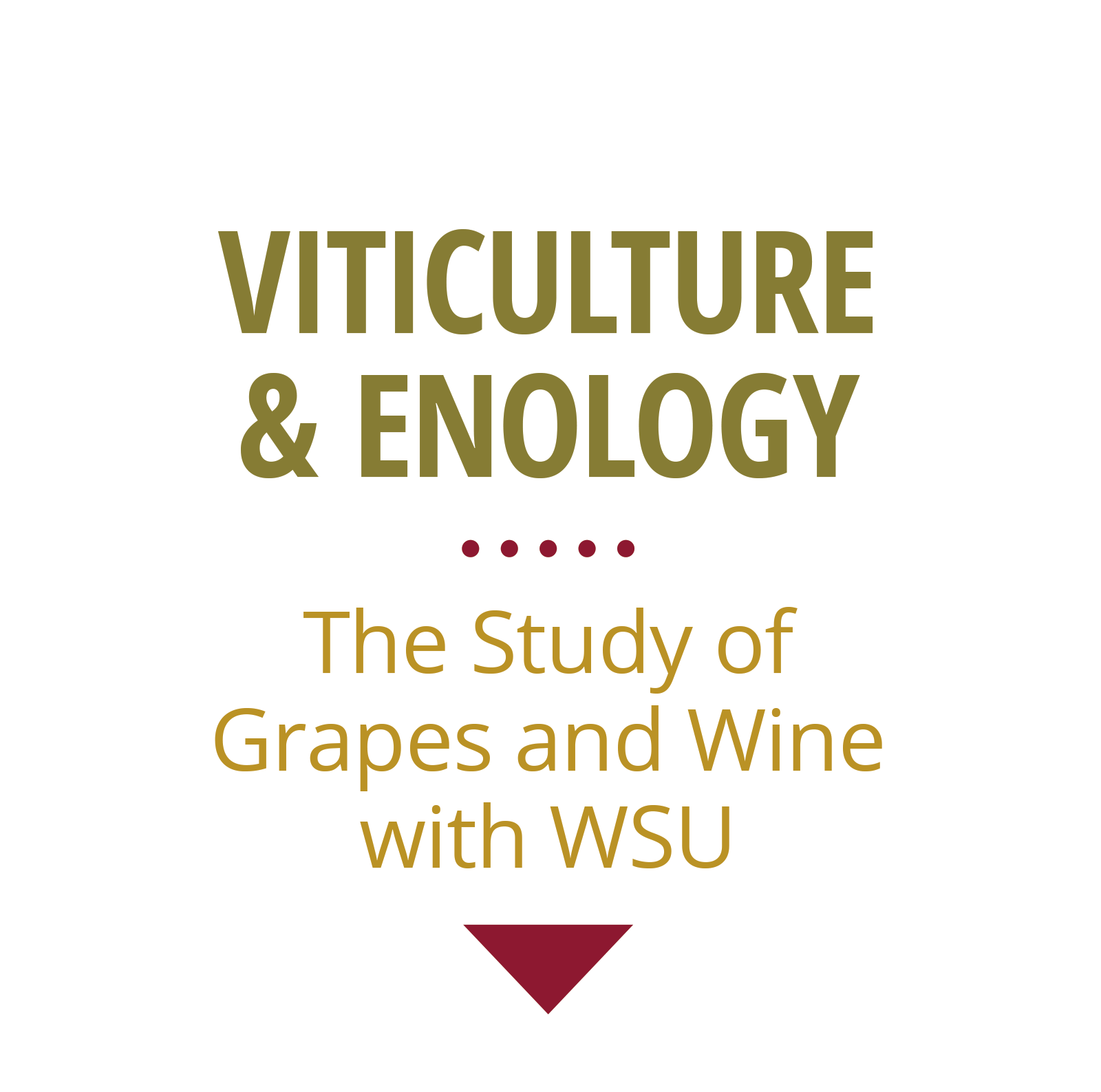By Thomas Henick-Kling, Director, WSU Viticulture & Enology Program
Reprinted from Fall 2012 Viticulture & Enology Extension News
While we all welcomed summer after a cool and rainy spring, it unfortunately came with extended periods of heat and dry conditions during a critical period of fruit development: immediately before and after véraison. From work carried out in Europe and in New York State, when severe water stress occurs during this time period, it can lead to the development of the Atypical Aging flavor defect (ATA).
This flavor defect was first described in Germany in the early 1980s [called untypischer Alterungston, (UTA)], and is found in essentially all winegrowing areas of the world.
Early on, German scientists and winemakers recognized a correlation between drought stress and the occurrence of ATA. Wines from hot and dry growing seasons, and from dry vineyard sites, were prone to developing ATA, while wines from cooler seasons and sites without drought stress were not. Later on experience also showed that over-cropping and possibly nitrogen deficiency in the vineyard are also contributing factors.
I have found wines with this defect in every state in the USA (including WA), and in Germany, Austria, Switzerland, Italy, France, Spain, Portugal, New Zealand, and Australia. In WA, I have not seen a high percentage of wine with ATA; this is likely due to our control over vineyard water supply through irrigation.
ATA is found in most wines from white winegrape cultivars. Wines affected by ATA quickly lose their varietal aromas; often within one year. With this premature loss of varietal flavors, atypical flavors appear, and are described as candle wax, furniture varnish, and dirty dish cloth. The atypical aromas quickly dominate the flavor of the wines.
People who are not familiar with this flavor defect will often notice a problem in affected wines, but generally label it as “old” or “oxidized”. This flavor defect should not be confused with premature aging; with premature aging, wines still have recognizable varietal and regional flavor characteristics.
Mitigating ATA in the Vineyard. The first step in preventing ATA is to avoid extreme water stress on white winegrape cultivars, particularly around véraison. In addition, ensure that fruit is fully ripened before harvest, as delayed ripening can be a sign of water stress or over cropping, which are associated with the development of ATA as described above.
Mitigating ATA in the Winery. In the winery, ascorbic acid (100 – 150 mg/L) can be added to the wine after fermentation is complete and after the wine holds free SO2. It will not hurt the wine (as long as you have free SO2 present at the time you add the ascorbic acid).
Remember the presence of ascorbic acid interferes with SO2 analysis by the Ripper method. The distillation / titration method and the FOSS Fiastar methods for SO2 analysis are not affected by the presence of ascorbic acid. This addition of ascorbic acid can protect the wine from ATA for about two years.
Other Tips:
Process drought stressed fruit gently; it tends to be more phenolic. Consider whole cluster pressing to minimize extraction of phenolics and potential ATA precursor. Fining may be necessary to remove the bitterness.
Separate press fractions (over 1.5 bar), ferment and treat affected fruit separately.
Some skin contact can help extract the small amount of fruit flavor from under-ripe fruit; 4 to 24 hours at 5°C (41°F) is likely enough. Carefully evaluate bitterness in this fruit.
Add plenty of nutrients to the must before and during fermentation for yeast and bacteria. Use a combination of DAP (diammonium hydrogen phosphate) and complex yeast nutrients such as Go-Ferm, Fermaid K, or Yeast Superfood. For drought stressed fruit it is very important to maintain adequate nutrient levels (aim for a minimum of 150 mg/L of Yeast Available Nitrogen).
Prolong contact with yeast lees and malolactic fermentation in white wines where appropriate. If necessary, add acidity back using tartaric acid.
After alcoholic and malolactic fermentation are complete, sulfite the wine promptly. Make sure the wine holds free SO2; check the SO2 at least two times. When the wine holds SO2, add ascorbic acid as described above.
RESOURCES
Henick-Kling, T. et. al. (2008). “Studies on the origin and sensory aspects of atypical aging in white wines”. Proc. 15th Int‘l Enol. Sym., Trier, Germany.
ATA Quick-Test
- Divide wine into two aliquots of 100 mL or more.
- Add 150 mg/L ascorbic acid to one of the aliquots, add nothing to the other.
- Pour each of the aliqouts into their own glass bottles, avoiding large headspace. Seal well.
- Place glass bottles into an oven set at 40°C (104°F). Keep bottles in the oven from 12 to 48 hours.
- Remove bottles from oven. Let the wines cool, and then taste both of the wines.
- If both wines (with and without ascorbic acid) taste the same, then the wine will not likely develop ATA. If the wine without the ascorbic acid tastes differently than the wine with ascorbic acid, then the wine will likely develop ATA.
Information from: Staatliche Fachschule für Gartenbau und Weinbau Veitshöchheim, Germany

